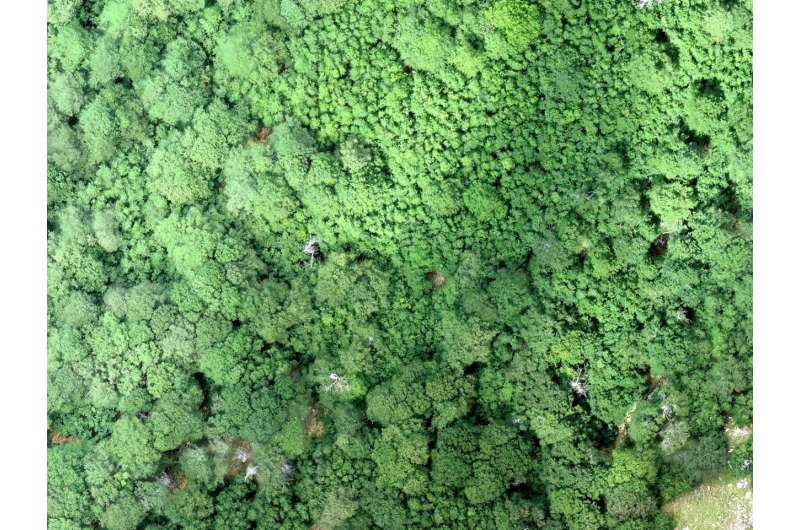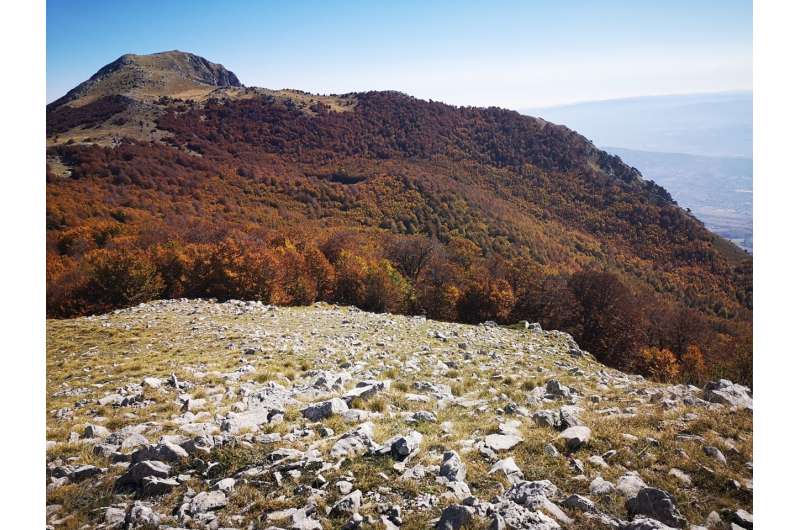Using drones to study forest canopy in UNESCO world heritage site

Old-growth forests provide windows into the history of both landscapes and climate. Furthermore, as the pressures of climate change and biodiversity loss amplify, studying and monitoring old-growth forests becomes increasingly important. Examining the structure of old-growth forests can provide key insights into forest integrity and provide pathways for restoration of forest ecosystems.
A recent study led by researchers at the University of Tuscia (Italy) and the Mediterranea University of Reggio Calabria (Italy) found that using unmanned aerial vehicles (UAV) allowed for an easier, advanced way to study the structure of old-growth beech forests. Published in Ecological Indicators, this study demonstrates that these novel survey methods can lead to a deeper understanding of forest canopy, gap size and distribution, and canopy structure.
Gaps provide windows to forest naturalness
The study took place in an old-growth beech forest in Pollino National Park located in southern Italy, which is a Mediterranean high mountain system, and a component of the UNESCO World Heritage serial site "Ancient and Primeval beech forests of the Carpathians and other regions of Europe." Beech forests are one of the most prevalent forest types in Europe, making the results of this study particularly relevant. While few old-growth beech forests remain, it is valuable to study and protect these forests to ensure benchmark indicators to describe their functionality and long-term forest restoration in a changing climate.
The forest canopy is more than a collection of tree heights; it provides a view of forest integrity. Factors such as gap size and spatial distribution are key to understanding forest processes and ecosystem health. Even more so, understanding natural gap formation can help to develop more natural management techniques in forest management. These close-to-nature forestry methods are effective ways to mimic natural disturbances, and therefore better mitigate climate change and preserve biodiversity.
Using drones to capture forest structure
The researchers used UAVs to build a ground-up picture of the old-growth forests. While remote sensing is generally used to analyze large landscapes over longer time periods, UAVs provide a cost-effective way to measure tighter landscapes, such as the old-growth beech stand in southern Italy.

Using UAVs provided the team with high-resolution orthomosaic images and field measurements were used to assure accuracy and validation. Gap sizes and heights were measured and categorized to describe the forest at various stages of development.
Using field and UAV data, the gaps were mapped across the stand and analyzed to describe shape and frequency. Ultimately, these methods were shown to be as precise as LiDAR technology, but at a fraction of the cost. The canopy profile of this stand revealed a bimodal height frequency distribution resulting from the merging of dominant trees alongside trees at the pole and regeneration stages in gaps. The complex forest canopy was comparable to other European old-growth beech forests.
A remarkable rugosity of stands was found, indicating a very complex outer canopy surface; a unique feature for an old-growth broadleaved forest. Not only does this suggest that natural gap dynamics are essential to the health of climate-resistant forests and population dynamics, but it also confirms the efficiency of these methods.
New methods can lead to better ways to monitor old-growth forests in front of global changes
Ultimately, the study found that these old-growth forests were characterized by small, frequent, and clustered gaps as opposed to larger sparse gaps. Gaps were most commonly found in the upper and middle layers of the canopy. The horizontal complexity could result from long-term fine-scale disturbance regime, highlighting the key role that old-growth forests have in maintaining biodiversity. The results of the canopy profile analysis indicated that this forest has high natural integrity, characteristic of old-growth forests.
These innovative methods can be used to compare nature and managed forest types as well. In the future, these methods could be used to examine even more confined forest areas, making research more accessible. In sum, these methods could allow for more direct fast fine scale monitoring, enabling efficient conservation planning and forest restoration programs.
In the U.N. decade of restoration, this research is particularly relevant. These methods could enable frequent, efficient monitoring techniques to assess and track forest structure and health, opening the door to effective nature conservation in a changing climate.
More information: Francesco Solano et al, Unveiling the complex canopy spatial structure of a Mediterranean old-growth beech (Fagus sylvatica L.) forest from UAV observations, Ecological Indicators (2022). DOI: 10.1016/j.ecolind.2022.108807. www.sciencedirect.com/science/ … ii/S1470160X22002783
Provided by University of Tuscia



















